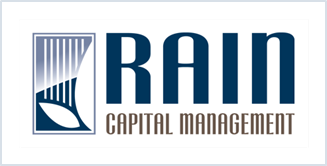The US economy held up better than expected in 2023 despite aggressive interest rate hikes, turmoil in the banking sector and geopolitical stress. Several factors contributed to this resilience. Restrictive monetary policy raised borrowing costs without triggering severe tightening in broader financial conditions, corporate profit margins remained healthy, consumer spending held up well, easing supply chain bottlenecks contributed to declining inflation, and the labor market continued its post pandemic recovery.
The surprising resilience of the US economy in the face of sharp interest rates hikes over the past 18 months has sparked enthusiasm in markets for a soft landing. Economic growth has been surprisingly strong this year and inflation pressures appear to be easing, giving the impression that the Fed may have engineered a pathway out of high inflation that won’t trigger a full-blown recession.
The US economy showed remarkable resilience in the first half of the year in the face of rising interest rates, sticky inflation, a regional banking crisis, an ominous yield curve and persistent geopolitical tension in Europe and with China.
The odds of a soft landing for the US economy narrowed significantly in Q1 as economic data continued to come in too hot and markets began to fear an environment of higher rates for longer.
We are writing to give you a brief update on the events in the banking sector over the past week and the implications on Rain portfolios. By now you are likely aware of the events surrounding Silicon Valley Bank (SVB) which was seized by the FDIC on Friday, and Silvergate Capital Corp, which announced it was voluntarily liquidating its banking entity. Both firms were hit by downturns in their respective industries, technology, and cryptocurrency startups.
The economy and financial markets remained rangebound in the fourth quarter, after a year of historic shocks including surging inflation, the outbreak of war in Europe and sharply tighter monetary policy.
The economy decelerated and financial conditions tightened during the third quarter, making for a challenging time for financial markets. While inflation numbers appear to have peaked during the period, the outlook for prices remains uncertain, driven by the continued war in Ukraine, draconian Chinese COVID policy, and a tight US labor market.
While the war in Europe dominated markets in Q1, the only war that mattered to markets in Q2 was the battle that was heating up between the Fed and inflation. During the quarter, surging prices forced the Fed to pivot to dramatically more aggressive tightening. This in turn drove mortgage rates up, sent the dollar soaring and led to significant stock market losses.
Just as the prolonged economic disruption of COVID-19 seemed to be disappearing in the rearview mirror, the world got a lot more complicated again in the first quarter of the year.



